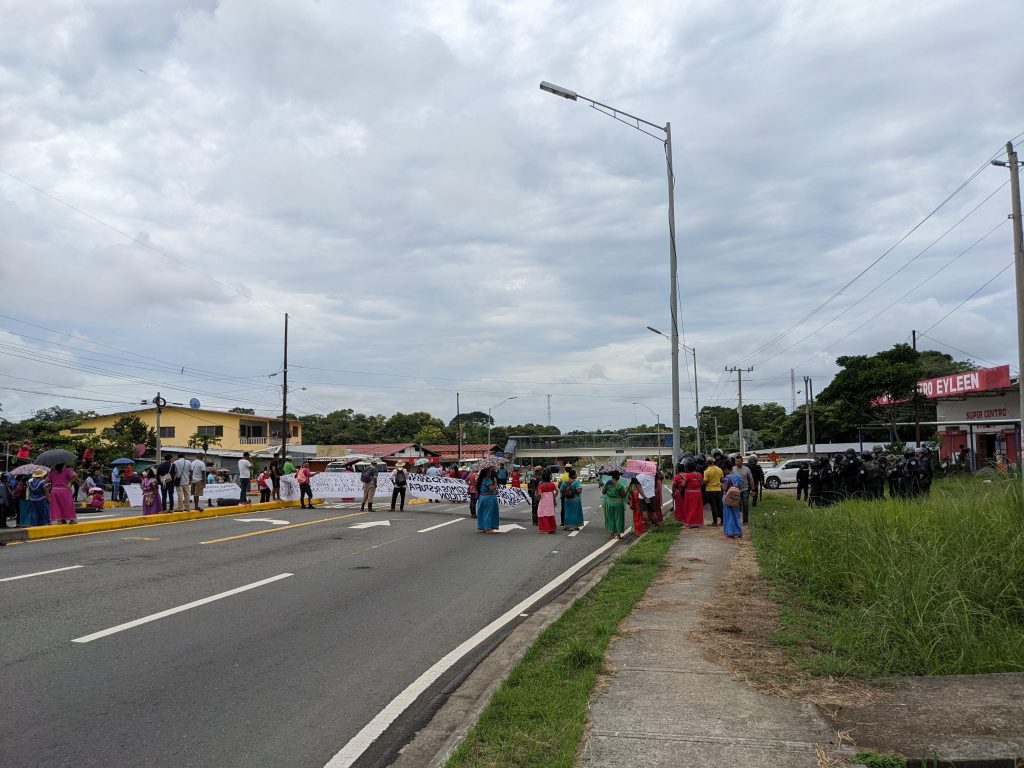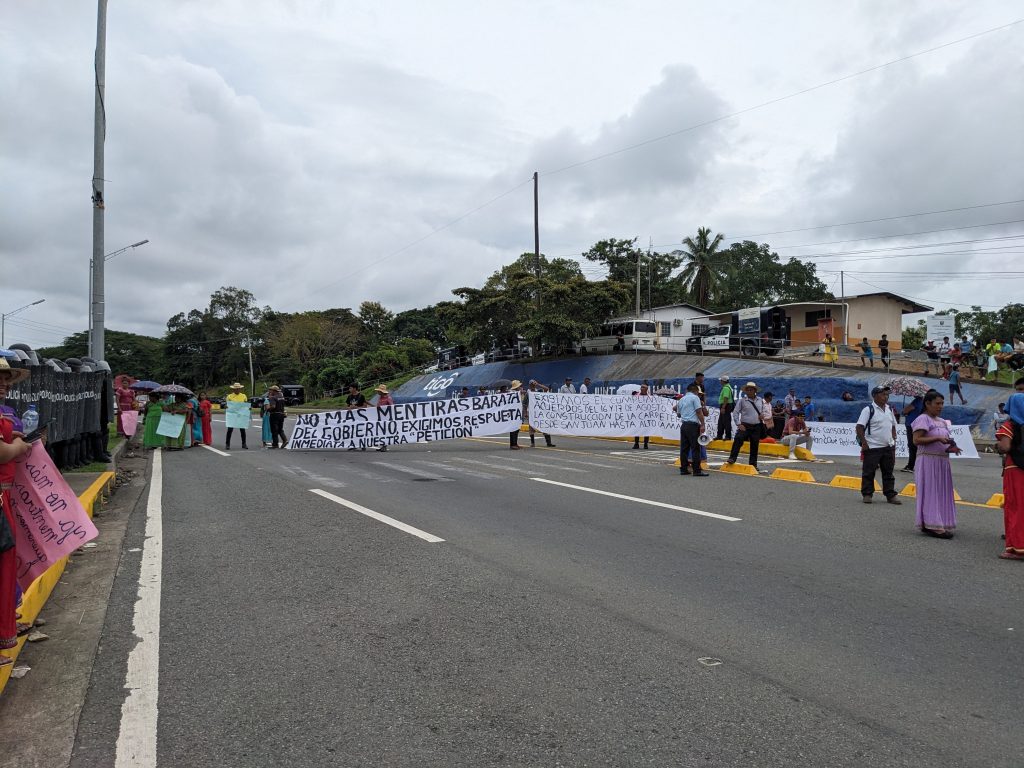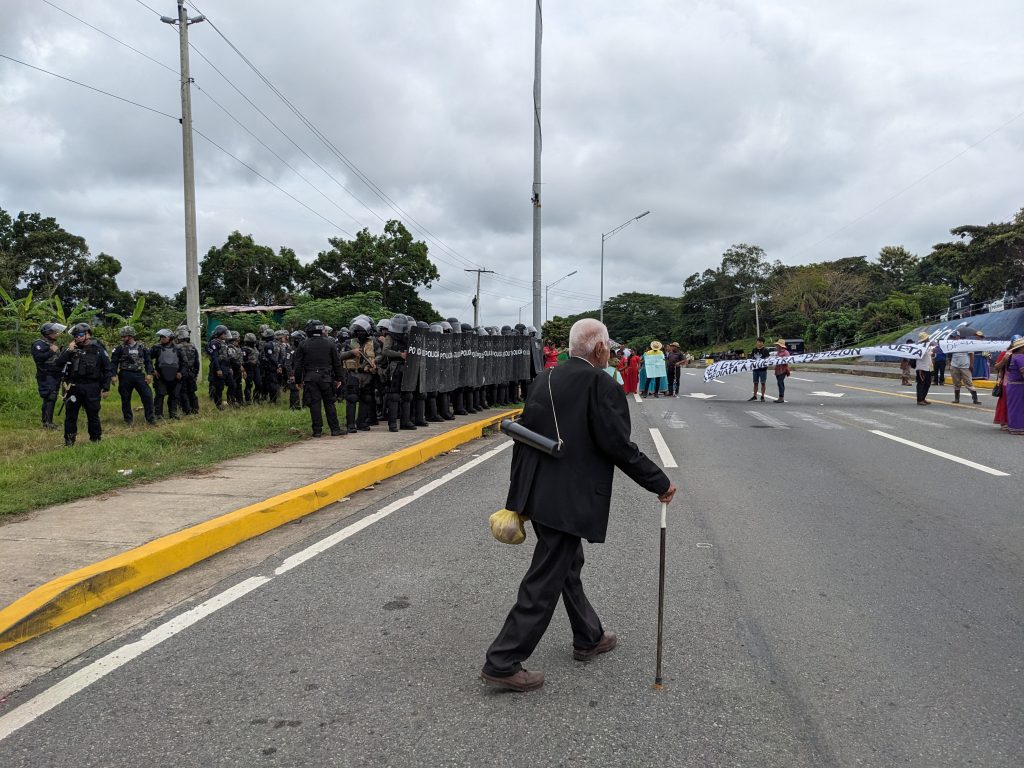In my last post, I suggested that it might be intellectually productive to think about infrastructure as a place, not as a road. However, I recently experienced the character of roads as infrastructure in a brute force manner. While travelling in Panama, we encountered roadblocks on two days which, on the first instance, aroused a significant degree of anxiety, similar to what Robert Johnston, Stefan Schellhammer and I have described in our paper ‘Infrastructure as a Home for a Person‘.
The first roadblock occurred on Sunday, August 6, en route from David in the western part to Panama City. The action had been planned well since it involved a staggered series of blocks along a stretch of the road where the so-called Panamericana is the only route along the isthmus, as we discovered after having successfully overcome the first two blocks. In fact, after getting stuck in the third roadblock, we discovered that there is a small mountain road which, in a wide semi-circle, offers a bypass. But we eventually found that this road, which was in an extremely poor condition with parts where half the road was missing already, eventually terminated in a construction site where the road had completely disappeared into an abyss. So we had to turn around and wait for the roadblock to be lifted, which eventually happened during the night.

The reason for the protests by the indigeneous people was exactly what we had encountered ourselves: the poor condition of ‘their’ roads and other infrastructures, including electricity and schools. On our way from Panama City to the western highlands a few days earlier I had thought that we were travelling through an uninhabitated mountenous area. But I now realized that the mountains were quite densely populated by indigenous people as the mountain road which we had tried is lined with villages, and people and animals are wandering along the road for their daily business. As we have learned from fellow travellers, these roads are in such poor condition, and there are so few of them, that pupils have to get up at 3 a.m. in order to reach their school on time (in fact, the third roadblock was set up right next to a school).
So whether or not the roadblocks were illegal — they probably were, but it seemed to us that the police had been held back by politicians who entered into negotiations with the protesters –, they were certainly legitimate.

A road, by its nature, is open only in two directions, sometimes only in one. This is why a roadblock brings to the fore the nature of infrastructure as an opening, as Robert Johnston and I have characterized infrastructure in our paper ‘Living Infrastructure‘. One challenge in infrastructure development then consists of keeping an infrastructure open, i.e. of fending off efforts to appropriate the opening for private purposes. Now, a roadblock is certainly the most extreme case of such appropriation. But it appears as such only if we take a single road as the infrastructure. Panama is, in this regard, an extreme case because the Panamericana is, across some regions, indeed the only road that connects the parts of the country. But this closing of the road just points out that the regions along the road, where the indigineous people now mostly live, perhaps because they have been driven away from the fertile lowlands, are not open in this sense. Hence, if we broaden our view to ask: what is the road infrastructure of a region, we find that such an infrastructure can and should be open in multiple directions. This is the case when the road network has the character of what Christopher Alexander calls a ‘semi lattice’, i.e. when it is a highly meshed network. In his seminal article ‘A City Is Not a Tree’, Alexander argues that modern cities are often ‘life-less’ because they have been designed. From a design perspective, the easiest, and often the only feasible, way is to decompose an object hierarchically so that each component performs a single function which contributes to some sub-goal which eventually feeds into an overall single purpose of a design object. By contrast, ‘living’ cities, examples of which are easily found in Northern Italy, are characterized by the components performing multiple functions; for example, a quarter may serve for living, working, play, and education. Similarly, a road infrastructure would display a semi lattice structure if it supported multiple kinds of activities, such as moving goods, travelling, and local commutes. The Panamericana, by contrast, only supports the movement of goods and people between the two major cities of the country, David and Panama City. It does not support the movement of the local people. ‘Their’ infrastructure is in a state of severe neglect and not integrated with the main road. Hence, even when the road is not blocked, it is not open in the sense in which an infrastructure should be open. To realize this, it was necessary to encounter the road when it was closed.

P.S.: In Panama I attended the 29th Americas Conference on Information Systems (AMCIS 2023) on which I presented a paper (‘From Data Exchanges to Data Markets: An Institutional Perspective), co-written with Xunhua Guo, in which we propose to make platform use data saleable in order to better balance the conflicting policy objectives of protecting the privacy of users as well as a competitive market for online services.